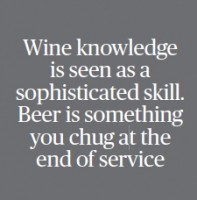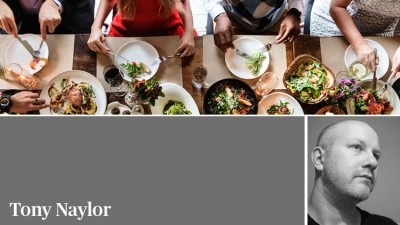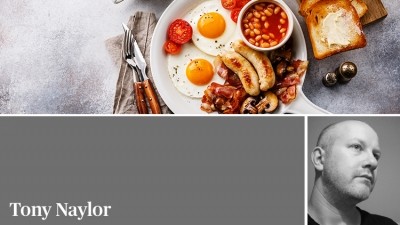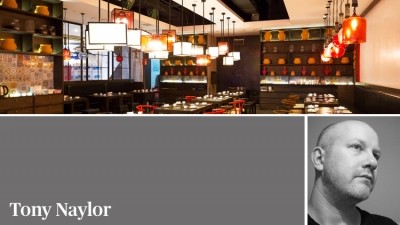MONTHLY COLUMN
Why is beer still the pour relation to wine?

In the face of undeniable data, most of the industry now accepts this is not a fad. Craft beer now accounts for 21% of the US beer market’s value and 42,000 UK venues sell it in some description. In particular, Millennials expect restaurants to offer a choice of small-producer beers and even most high-street chains now list something new wave and hoppy.
Yet, in many otherwise discerning restaurants this acceptance of the importance of beer is often grudging. That box is ticked, but poorly. In part, this is due to historic prejudice. Restaurateurs and chefs are embedded in a culture that, for centuries, has disdained beer and worshipped wine. Many top chefs (see David ‘Momofuku’ Chang’s GQ columns) take a perverse pride in their love of crap lager, while staff race through WSET wine qualifications with an application they rarely show for beer.
In short, wine knowledge is seen as a sophisticated transferable skill. Beer is regarded as something cold and wet you chug down at the end of service.
Consequently, what should be simple: the compiling and delivery of a short, quality beer list (default lager; better lager; session strength pale ale; IPA; traditional bitter; a dark beer; maybe a wheat), is often done chaotically, in a way that misunderstands beer drinkers.
Here are eight mistakes restaurants make:
1. Being blatantly obvious – lazily using one major supplier to provide you with a list of ‘name’ beers (BrewDog, Brooklyn, Goose Island, etc.) is, if not objectively bad, then boring. These are supermarket staples.
2. Applying low-rent localism – in beer, buying local is not always best. Carrying dull, traditional 500ml bottle-conditioned ales (which your staff cannot pour correctly) because they are brewed locally, will not impress hop-heads.
3. Minding the knowledge gap – vague descriptions (‘it’s a pale ale’ ) will not sell beers to clued-up drinkers. They want to know the beer’s style, possibly the hops used and, crucially, which brewery made it. In beer, like wine, product knowledge is essential.
4. Kitchen craziness – often being new to beer and primarily interested in fascinating ingredients, chefs have a tendency to list or co-create bizarre beers that utilise, say, kimchi or kelp, bacon or garlic. A vanishingly small number of drinkers will find these palatable.
5. Getting personal with taste – likewise, you cannot solely list niche beers that you and your staff (often not regular beer drinkers) a) like b) consider refined enough for a restaurant setting. A saison, a wheat beer and a honey ale (mystifyingly popular in Michelin restaurants) is not a beer list, it’s a stock review of unsold lines you will later discontinue.
6. Gormless greed – you cannot stick 70% GP on a beer if it means that fairly ordinary 330ml bottle becomes a £7.50 investment. The end.
7. Caring about pairing – brewers, chefs and restaurateurs push beer ’n’ food matching – as if beer needs to be ‘legitimised’ as a serious drink – but punters are blasé. It is a sideshow. Concentrate on stocking amazing beer. Matching them to dishes is secondary.
8. Poor stocktake – if a drinker wants an IPA, they want an IPA. Not a porter. These are not interchangeable. It is not all ‘beer’. So ensure the most popular beer styles (lagers, pales, IPAs), are always in stock. It sounds obvious. But many restaurants fall at that first hurdle.
Last year, the Society of Independent Brewers reported one in three people would eat out more if restaurants served better beer. Can you afford to neglect it?
This column first appeared in the July 2017 issues of Restaurant Magazine. Subscribe here from £70 a year.

















